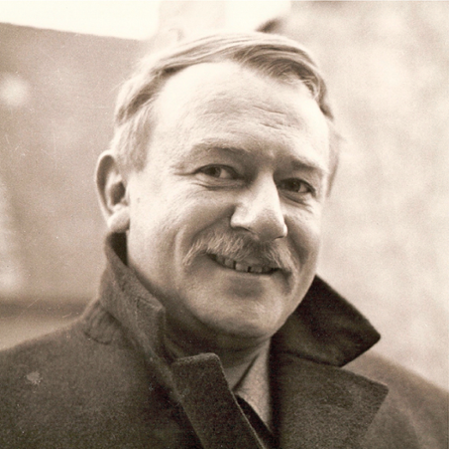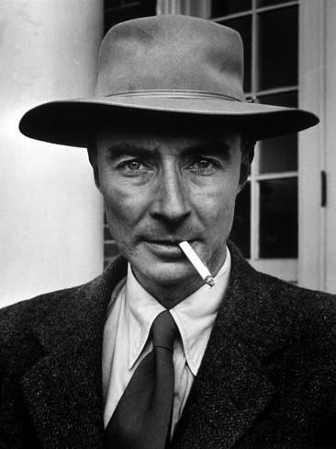Dramaturgical Resources
2017
In the Matter of J. Robert Oppenheimer
By Heinar Kipphardt (translated Ruth Speirs)
Over the course of the season, our assistant directors and student dramaturgs will be compiling dramaturgical resources relating to each production as it develops. Below are some links to websites which relate to the history of the play, the biography of the playwright, and sites that contextualize and, we hope, shed light on the directorial approach to the dramatic material.
We hope you find these resources of interest.


Heinar Kipphardt (8 March 1922 - 18 November 1982) / J Robert Oppenheimer (22 April 1904 - 18 February 1967)
Heinar Kipphardt and the Phenomenon of Documentary Theatre
In Der Sache J Robert Oppenheimer Die So was first published in 1964 in German, and was translated into the English In the Matter of J. Robert Oppenheimer in 1967 by John Roberts. The play is classified as a piece of Documentary Theatre for its examination of recent events, often through historical and court documents. The playwrights who wrote documentary theatre often examined themes of responsibility and guilt in historical events, from the horrors of Auschwitz, to eventually the Vietnam War. Heinar Kipphardt was involved in the Theatre of Fact movement in Germany in the 1960s. Not much is known about the playwright himself, most records about his life are solely in German. Kipphardt’s interpretation of events was not well-received by Oppenheimer himself. He strongly objected to Kipphardt’s portrayal of events, telling an interviewer that Kipphardt had made the farcical hearing a tragedy. He threatened to sue Kipphardt after reading a transcript of the play, shortly before it was to be performed. ‘New York Times theater critic Clive Barnes called it an "angry play and a partisan play" that sided with Oppenheimer but portrayed the scientist as a "tragic fool and genius".’
On Broadway, In the Matter of J. Robert Oppenheimer played 162 performances at the Vivian Beaumont Theatre, opening on March 6, 1969, and closing on September 27th of the same year. The production won both the Drama Desk Award for Best Director, Gordon Davidson, and the Drama Desk Award for Best Actor, Joseph Wiseman, who played the title role, in 1969.
Historical Context of the Play
The play focuses on the 1954 Personnel Security Hearing of Dr. Julius Robert Oppenheimer, esteemed nuclear physicist and national hero for his work on the Manhattan Project, the code name given to the scientific and military effort to create the first atomic bomb during World War II. Oppenheimer, as the head of the Los Alamos laboratory in New Mexico, was the driving force behind the creation of “Gadget,” the world’s first nuclear device, detonated on July 16th, 1945. Less than a month later, the bomb created by Oppenheimer and his team was used to bomb the Japanese city of Hiroshima, and three days later, Nagasaki. Following the Japanese surrender, Oppenheimer and the other Manhattan Project scientists were hailed as national heroes.
Meanwhile, a team of scientists led by renowned physicist Edward Teller campaigned for the creation of the world’s first thermonuclear device, the hydrogen bomb: a device 10,000 as powerful as the bomb that devastated Hiroshima, which relied on the still-emerging science of nuclear fusion instead of fission, which powered the atomic bomb. Teller and his followers were largely rebuked by the scientific community, especially by Oppenheimer, who expressed doubts and moral qualms about the proposed device. It was unknown if such a device could even be built, still Teller and his associates pressed on, imploring the government for support. After the war, Oppenheimer retired from his post at Los Alamos, and went on to become the Director of the Institute for Advanced Study at Princeton University, where he taught with Albert Einstein. He also served on the General Advisory Committee of the Atomic Energy Commission, providing guidance to the military and executive branch on how to proceed on further atomic matters. Even without Oppenheimer on the team, the first American hydrogen bomb was eventually tested on November 1, 1952; vaporizing the island of Elugelab. Nine months later, the Soviet Union tested Joe I, ending the short-lived American thermonuclear monopoly. The test sent the American military into a frantic tailspin, looking for someone to blame. Lewis Strauss, head of the AEC, blamed J. Robert Oppenheimer’s lack of support for the initial project for the delay of the bomb’s development.
America at the time of the play’s action was paranoid with fear of Communistsand any left-wing views, due to the still-new Cold War, and the fear-mongering tactics of Senator Joseph McCarthy and his supporters on the House Un-American Activities Committee. Dissent or disagreement against the American government labeled one a traitor or a Communist sympathizer, and so an air of conformity and staunch Republicanism permeated American culture. Oppenheimer had come into contact with Communist ideas and organizations in the 1930s, and called himself a “fellow traveler,” or one who does not belong to the Communist party, but agrees with its principles. His brother, sister-in-law, best friend,former lover, and wife had all been members of the Communist party at one time. These associations would eventually bring ruin to one of America’s greatest heroes in a world terrified of the spread of Communist ideas.
During the trial, Oppenheimer’s Communist association which he had been formerly cleared of were re-investigated, as well as Oppenheimer’s conduct in the Chevalier Incident, in which Haakon Chevalier, Oppenheimer’s best friend for years, approached Oppenheimer at a dinner party and reported that the Soviet Intelligence agent George Eltenton was looking for technical information of the Manhattan Project. Oppenheimer said something to the regard of, “but that would be treason.” Nothing more came of the incident, but Oppenheimer failed to report the suspected espionage for months, and when he did, he created a “cock-and-bull story” in order to protect Chevalier, lying to the security authorities. Oppenheimer was cleared of charges in the 1940s, though in the security hearing, the incident was brought up again at length, and served as the most damning claim against Oppenheimer.
The play is obviously a condensed and dramatized version of the hearing, though a commitment to the facts runs through the play--Oppenheimer is exceedingly complex, both in drama and in life, and the lives of those involved in the hearing are well-preserved in the play, though condensed. Though facts are paramount, the arguments raised in the play are open to interpretation, making In the Matter of J. Robert Oppenheimer a morally complex and thought-provoking piece of Documentary Theatre.
More Resources
Production team of the 1969 Broadway production: Ruth Speirs served as translator for the production, while the published play was translated by John Roberts in 1967-68. Peter Wexler served as scenic designer, Constance Ross as costume designer, and John Gleason did lighting design. Barbara Mae-Phillips was the Production Stage Manager, and Patrick Horrigan was Stage Manager.
The Day After Trinity: 1981 Documentary on the Manhattan Project and J. Robert Oppenheimer.
Full Unclassified Transcript of J. Robert Oppenheimer’s Security Clearance Hearing
A collection of legal documents considering the Personnel Security Hearing of J. Robert Oppenheimer.
"The Paradox and the Dilemma": Gordon Gray and the J. Robert Oppenheimer Security Clearance Hearing
In the Matter of J. Robert Oppenheimer Character Profiles
Oppenheimer’s Answering Letter to the allegations of Atomic Energy Commission, also referred to in the play.
Oppenheimer’s famous quote in response to Trinity Test, explained.
